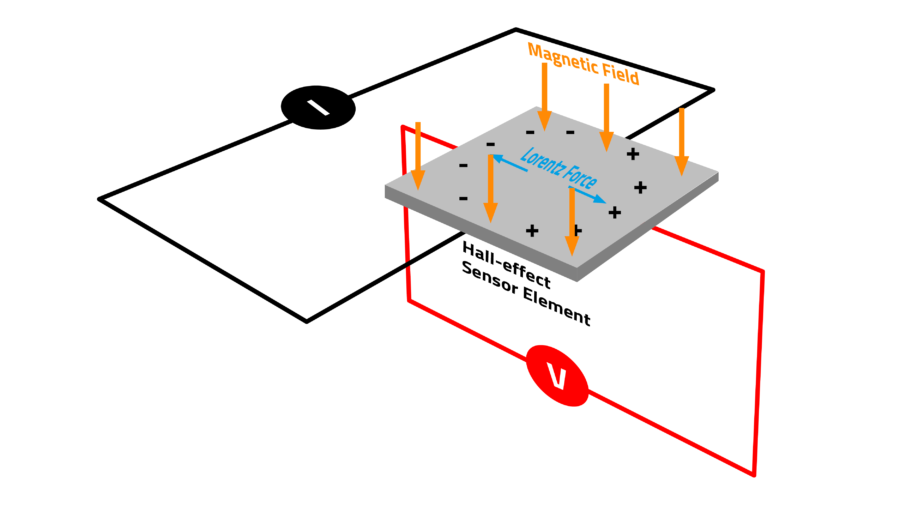Switching and Absolute Sensors
The earliest Hall-effect sensors were switching sensors, which activate when the magnetic field strength surpasses a specified threshold value. Switching Hall-effect sensors can function as standalone devices, commonly used in applications like proximity switches, or be integrated with incremental transducers, combining the sensor element and magnet with distinctive characteristics. Typical applications include magnetic encoders and gear tooth sensors.
The basic absolute analog sensor is a radiometric sensor; its output is proportional to the magnetic field strength and orientation. This principle underlies all analog Hall effect sensors, which now come in a wide range of options. Analog sensors are used in linear and rotary transducers that include different characteristics such as output signal, programmable parametric, supply voltage and so on. Analog sensors are used in many applications including linear positioning, steering angle, clutch control, and others.
2D and 3D Sensors
Traditional one-dimension sensors only sense magnetic field perpendicular to the sensor element. This requires precise magnet positioning and motion since the tolerance for air gaps and magnet movement is low. Additionally, material properties such as variations in magnetic flux between magnets and temperature variations must be considered.
With two- or three-dimensional sensors, the magnetic field is measured in two or three dimensions; X, Y, and Z. This is useful for multidimensional positioning, for example in joysticks. It also enables more robust and accurate positioning in rotary and linear transducers by utilizing additional dimensions in the calculation of position.
Explore our rotary sensors with Hall effect.
Contact us if you need help finding the right sensor for your application.



